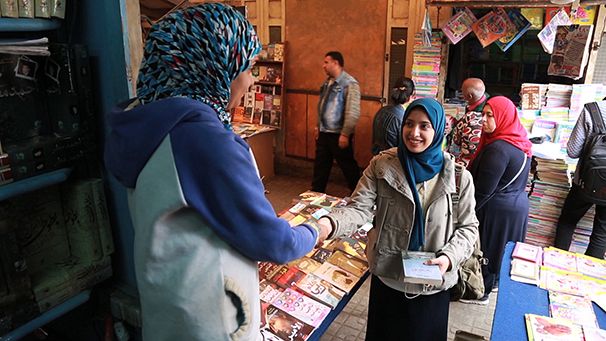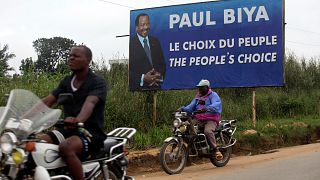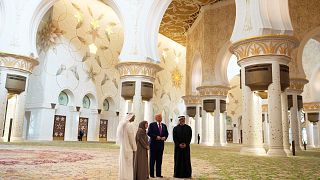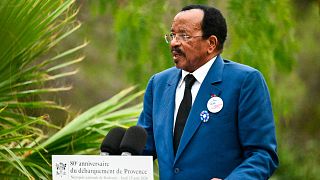Inspire middle east
What do words on a page, expressive movement, and fashion all have in common? In the Middle East, they’re being used to connect people in society in differing ways.
THE UNCONVENTIONAL TRADITIONALIST:
Few Saudi Arabian designers of robes, known as thobes and kanduras, can claim to have dressed American rapper Snoop Dogg and shoe maestro Christian Louboutin when they’ve come to the region. Hatem Alakeel, however, can do just that.
Since he launched his label Toby eight years ago, Hatem’s unconventional silhouettes and striking colour palettes have drawn a discerning client list of celebrities and Saudi nationals.
Uma publicação compartilhada por Hatem Alakeel (@hatemalakeel) em 16 de Jun, 2018 às 6:58 PDT
Quick to gain traction too has been his womenswear line, which he rolled out in 2013.
Instead of designing conservative black abayas, Hatem created kimono-inspired long jackets with geometric collars and intricate embroidery. The line’s success lay in the fact that the pieces fitted comfortably within the region’s unspoken style parameters of modern-yet-modest. Conservative fashion, and even famous ambassadors for the genre are very much on trend, according to the designer.
“VALENTINES CHIC❤️” #happyvalentinesday #tobyfemme
Uma publicação compartilhada por Toby HatemAlakeel © توبي (@tobyhatemalakeel) em 13 de Fev, 2018 às 11:02 PST
“I do think it’s fantastic when you have models like Halima [Aden] on international platforms – Milan, New York Fashion Week…” says Hatem of the Somali-American model, best known for being the first woman to wear a hijab in a Miss Minnesota USA pageant.
Given the rapid social and economic changes witnessed in Saudi in recent times, Hatem is hopeful that opportunities for entrepreneurs, like him, will become more abundant.
“I think certain doors that were closed then, are open now – in different industries,” he says, “[That’s] because of the lack of corruption and no tolerance for corruption as well.”
BUDGET BOOKS FOR CAIRO’S BARGAIN-HUNTERS:
Al-Attaba Square is one of Cairo’s busiest and most famous markets, known for low-grade products and affordable goods.
Behind the façade, however, there lies a cultural gem – a book market that young Egyptians come to from all over the country.
As the North African country faced economic hardship, in particular during the past seven years, young book lovers have resorted to buying second-hand volumes at the market to satisfy their passion for literature.
“You can just send me to a place where I can read stories and I’ll ask for nothing more,” says Cairo-based student Ali Ahmed. “We don’t have much money, [but] here we can buy five or six books for the price of two elsewhere.”
At fancy bookstores like Diwan, in the upscale neighbourhood of Zamalek, international best-sellers, like J.K. Rowling’s Harry Potter series, are selling for more than USD$15. Yet in the Azbakeya book market, they go for less than a single dollar.
Heba is the only female second-hand book-seller in this market. She’s followed her father into the business and recalls with fondness that he once told her that ‘books were more important than life’.

“That sentence lives with me ‘til this day,” says Heba, “It made me respect books immensely and I don’t like anyone to belittle books.”
Azbakeya’s book recycling business model has proven successful and its popularity is spreading. The potential biggest threat the market faces in the years to come, however, may be the increase of free, downloadable books online.
That said, if traditionalists like Ahmed continue to encourage others to take a leaf out of their book, the second-hand market might just survive and even thrive.
TOE-TAPPING TALES FROM THE STREETS OF AMMAN:
Architect-turned-dancer Shireen Talhouni is used to raising eyebrows.
Her penchant for rolling around on the streets and stairwells of Jordan’s capital may have much to do with it.
As a contemporary artist in Amman – specializing in something called ‘site-specific dance’, where movement is not restricted to enclosed spaces – Shireen’s stage is the outdoor world.
“On stage, I feel like the sets are only decorative,” she says, “With site-specific work you’re trying to highlight something about the environment through the work itself.”
It was at the age of thirty that Shireen found the courage and creative conviction to shun the world of building design and explore an alternative type of artistic expression. That’s not to say, however, that she doesn’t still hold her former profession in high regard.
A post shared by Shireen Talhouni (@shireentalhouni) on Jun 20, 2018 at 6:51am PDT
“I used to love that process you know, researching and looking at how people live,” says Shireen, “And discovering a place from observing.”
Yet the streets were calling Shireen’s name and she made it her business to establish a dance community, where like-minded individuals could come together at her weekly classes.
“It’s a space in Amman where you have space to be yourself,” she says, “Really be yourself. In a way, I think that the city doesn’t have those – or offer those – kinds of places.”
Shireen says that her group dance sessions are a safe place for women to express their sensuality and that men find the experience liberating too.
This is especially true for twenty-year-old Mustafa Al Shalabi, who finds that the classes provide respite from the stresses of everyday life.
“In this hour, I have no shame – no judgement – literally nothing on my mind,” he says, “A complete hour of happiness. Dancing is for everyone, but in this society, it’s not for everyone.”













00:51
Marrakech national festival: honoring the legacy of popular arts
02:20
Young designers grace the runway at Fashion Finest Africa’s show in Lagos
02:19
Parkinsons patients report better balance after capoeira classes
Go to video
Paraguayan town celebrates vibrant Kamba Ra'anga festival with masks, fire and tradition
02:19
US funding cuts threaten youth programmes at Kenya's Kakuma refugee camp
00:55
Cristiano Ronaldo extends contract with Al-Nassr for 2 more years